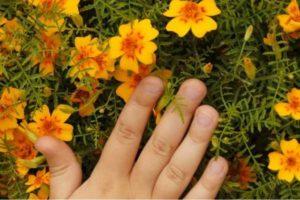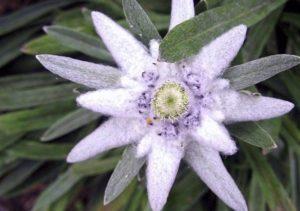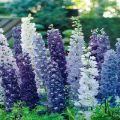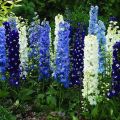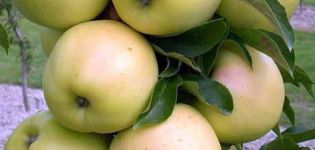Planting, growing and caring for a perennial delphinium in the open field
It is difficult not to notice the spectacular peduncles of the perennial delphinium in the garden. They bloom at the very zenith of summer. If the care is correct, then in the last days of August the perennial blooms for the second time. Subject to planting rules and high-quality agricultural technology, the perennial lives in a flower bed for 5 years.
Content
- 1 Description and characteristics of the flower
- 2 Popular varieties of delphinium
- 3 Breeding options
- 4 Growing a perennial delphinium from seeds
- 5 Delphinium seedling care
- 6 Planting a delphinium in open ground
- 7 Flower care
- 8 Delphinium pruning
- 9 Delphinium transplant
- 10 Diseases and pests
- 11 Delphinium in landscape design
Description and characteristics of the flower
Herbaceous plant, perennial, from the Buttercup family. Scientists call it larkspur, flower growers call it delphinium, and many people know it as a spur. During the season, the plant forms 10-15 stems. They are straight, their height depends on the species (10-300 cm).
The low-growing varieties are native to the highlands, the tall varieties are derived from the delphinium species growing in the forest. Shoots are covered with beautiful rounded or deeply dissected leaves. At the bottom, they form a basal rosette.
During flowering (June-July), the plant throws out tall peduncles covered with bright semi-double inflorescences. A separate flower lives for about a week. Its diameter can reach 7 cm. The color depends on the variety. The flowers are blue, light blue, white, pink.
The color of the eye, located in the middle of the flower, most often differs from the color of the outer petals. The root system is racemose, with a large number of adventitious roots. Renewal buds are formed on the roots of old plants, the central part of the rhizome dies off.
Dried flower stalks are cut so that the delphinium blooms again at the end of summer. Perennial is resistant to drought and frost. It begins to prepare for winter with the onset of cold weather. Nutrients are transferred from the aerial part to the roots.

In winter, the delphinium is not afraid of frost, but of thaws. It dies not from low temperatures, but from the fact that roots are extruded. A perennial is considered a poisonous plant. In the tissues of the roots and fruits there are substances (alkaloids), they are able to exert a depressing effect on the central nervous system, gastrointestinal tract and heart.
The plant is a honey plant. People can not eat honey collected from burgers, it is toxic. The plant can cause intoxication in humans, insects and mammals.
Popular varieties of delphinium
The rare yellow Sungleam can be grown in the middle lane.Florists are amazed with their beauty by new terry hybrids of unusual colors from Scotland, New Zealand.
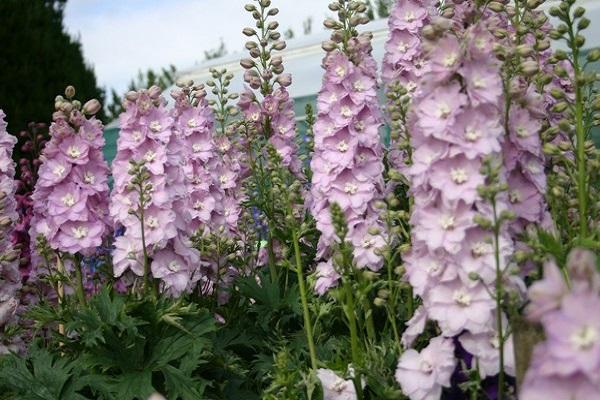
Hybrid
The most numerous subspecies of delphinium, combining hybrid forms. They were obtained by crossing different perennial species. Delphinium hybrid forms are popular with gardeners. Many varieties of various colors have been bred.
The height of perennials of this group is 0.3-2 m, flowers are simple, double, semi-double with a diameter of 3-7 cm. There are forms with inflorescences of 50-70 flowers. The main colors are blue, lilac, violet.
Belladonna
The most common varieties are Casa Blanca, Volkerfriden, Lamartine. Casa Blanca has amazingly beautiful snow-white flowers, semi-double, double, large - 5 cm in diameter. Inflorescences are paniculate, loose. Height of peduncles (stems) 1.2 m.
Lamartine candles are colored dark blue, formed by semi-double flowers. The Volkerfriden variety decorates the garden with spectacular blue candles up to 1.5 m high. The snow-white flowers of Casa Blanca have a yellow center.
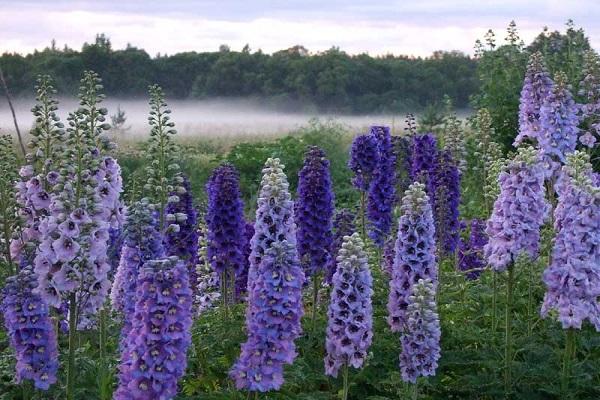
Large-flowered
Chinese, Mongolian, Korean wild-growing varieties were taken as a basis. Garden forms of large-flowered delphinium were obtained from them. Stems 50-100 cm high are covered with narrow, strongly dissected tripartite leaves.
Inflorescences, the diameter of which is 5 cm, are collected in large, loose clusters of white, blue, blue, pink color. The flowering period depends on the climatic zone. Pedicels are long, sepals are elliptical, 25 mm long.
Popular varieties of large-flowered delphinium:
- Blue butterfly. The pyramidal inflorescences are bright blue or light blue.
- Pink butterfly. Pale pink loose racemose inflorescences. Flowers 3 cm in diameter. Plant height 40 cm.
- White butterfly. The variety is planted in mixborders. The flowers are white, collected in a brush.
- Mix Butterfly mix. The bushes are low, the color of the flowers is very different.
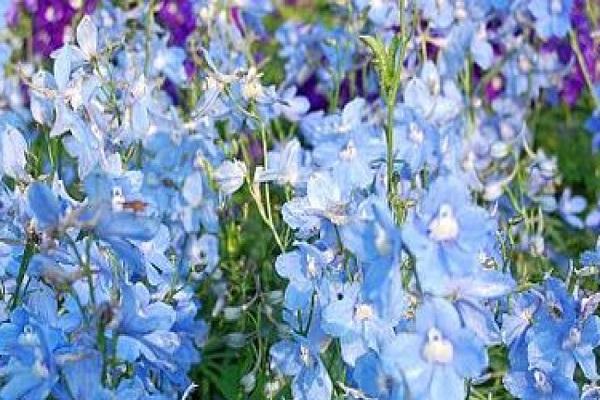
Field
The variety combines tall varieties (2 m) with simple and double flowers. This species has been cultivated since 1572. The following varieties are in demand:
- Frosted Sky - the middle is snow-white, the marginal petals are pale blue;
- Qis Rose - pale pink color;
- Qis Dark Blue - the color of the inflorescences is dark blue.
The varieties bloom for a long time, the buds begin to bloom in June.
Tall
Delphis Starlight variety with bright blue double flowers, with a contrasting black eye. The color of the upper petals is lilac. The height of the stems is 1.5-1.7 m. The width of the flower in the cross-section is 6 cm. Flowering lasts all summer until September, and begins in June. High delphinium can be grown in the 4th zone of winter hardiness.
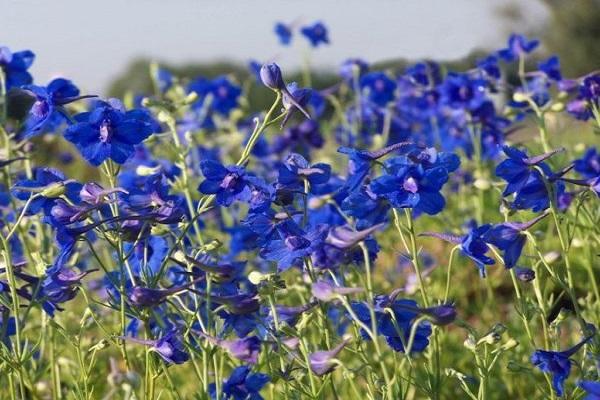
Breeding options
The perennial is propagated vegetatively (dividing the bush with apical cuttings) and sowing seeds. The easiest option is to divide the bush. To grow a new interesting variety, they purchase high-quality seed from a trusted manufacturer.
By dividing the bush
In spring, 3-4-year-old bushes are separated until the active vegetation begins. In autumn - during the ripening of the seeds. Old perennials do not tolerate transplanting well. Healthy plants are chosen for reproduction. The bush is dug up by the root.
Divide by hand or with a garden tool (shovel, scissors). 1 shoot and 1 dormant bud are certainly left on the plot. More is possible, less is impossible. With spring division, the delphinium blooms in the first year of life. Delenki are immediately seated on a prepared flower bed.
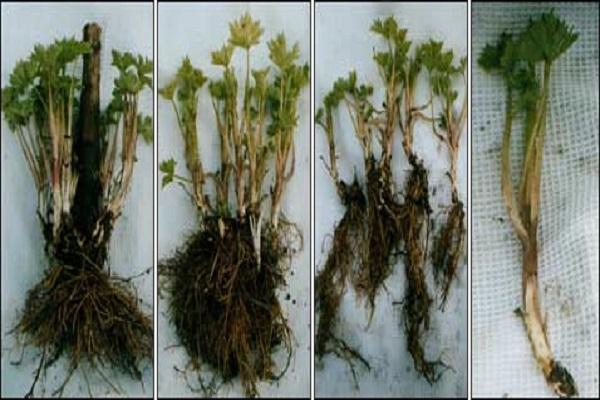
Propagation by cuttings
Apical cuttings are taken. In the spring, cut stems 10-15 cm in length, cut them with a small heel - a small piece of root. Rooted in containers. Fill them with a mixture of peat (1 hour) with sand (1 hour). The cuttings are buried by 2 cm, the lower part is powdered with crushed activated carbon. The soil is abundantly moistened with a spray bottle.
A mini-greenhouse is erected over the box to maintain constant humidity.After 2 weeks, callus will form in the cuttings, they will take root by the end of the 5th week. All this time, you need to maintain the air temperature at 20-25 ° C. After a year, the seedlings from the boxes are transplanted into the open ground.
Seeds
Delphinium seed germination - 50-80%. Collect them in the fall, take the seed pods located at the bottom of the peduncle. Cut off, suspended in a shed above the container.
When the seeds are ripe, the capsules split open. Store them at +5 ° C. A refrigerator is suitable for this purpose. Delphinium in open ground can be sown before winter (November), spring (May) or at the end of August.
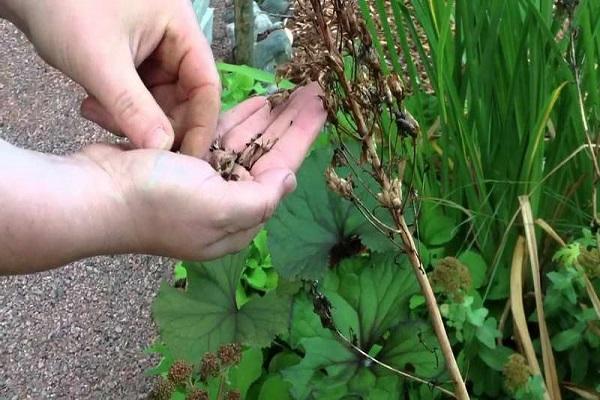
Growing a perennial delphinium from seeds
Seedlings are successfully grown at home. Sowing is done in March. Seeds are planted in separate 300 ml glasses so as not to dive. Transplanting seedlings of delphinium does not tolerate well.
Selection of seed material
Choose a bush with pronounced varietal characteristics. To speed up the maturation of the seeds, the upper part of the peduncle is broken out. No more than 15 boxes are left on 1 plant. Collect them on a clear day after they turn brown.
The boxes are dried in a cool room, split open, and the seeds are collected. A delphinium grown from self-collected seed material may lose varietal characteristics. Inflorescences may have a color different from the parent plant.
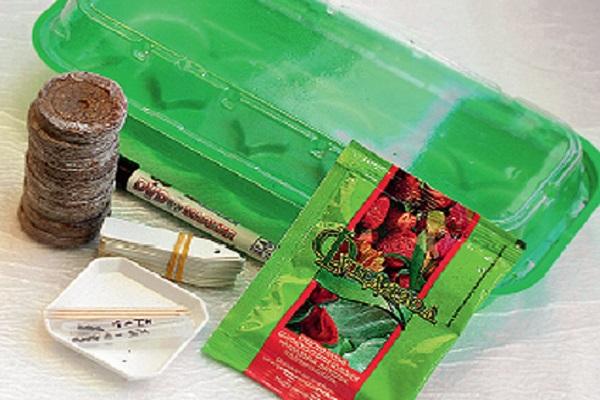
Preparing seeds for planting
Seeds are stratified for 2-4 weeks (kept in the refrigerator). Before sowing, a mandatory disinfection procedure is carried out. Use a solution of potassium permanganate, or purchase an effective fungicide from the store.
For convenience, the seeds are poured into a small cloth bag. Immersed in the solution for 25 minutes. The disinfected seed is first washed with running water, then immersed in a stimulant solution. Suitable:
- "Epin";
- Kornevin;
- "Heteroauxin".
Delphinium seeds are kept in the stimulator for at least a day. They are dried before sowing.

Sowing delphinium seeds for seedlings
You need to plant a delphinium at the end of February or in March. Moisten the soil well, spread the seeds over the surface, do not deepen. Can be lightly sprinkled with sand (1-2 mm). Place the container in a transparent bag.
Delphinium seedling care
To obtain healthy seedlings, it is important to maintain a certain temperature regime:
- before emergence - 15 ° C;
- after sprouting - 20 ° C;
Water the soil sparingly. Water should not get on the leaves during watering. You need to feed once every 2 weeks. Agricola is suitable for this purpose.
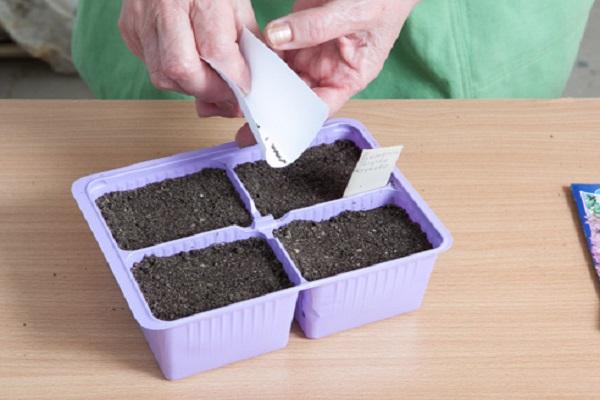
Planting a delphinium in open ground
It is not difficult to grow a beautiful perennial from high-quality seedlings. By the time of transplanting, the seedling should have a strong root system.
Choosing a landing site
It is better to plant seedlings in neutral soil. Choose a sunny place, not in a draft. Peduncles are high, heavy, often break from strong gusts of wind. Acidic soil is deoxidized in autumn: during digging, lime 200-500 g / m² is added. The rate depends on the pH level.
When to sow a plant outdoors?
Freshly harvested delphinium seeds are sown in late autumn or spring after preliminary stratification into the soil warmed up to 15 ° C. Seedlings, sown in February-March, are planted in a flower bed in May.
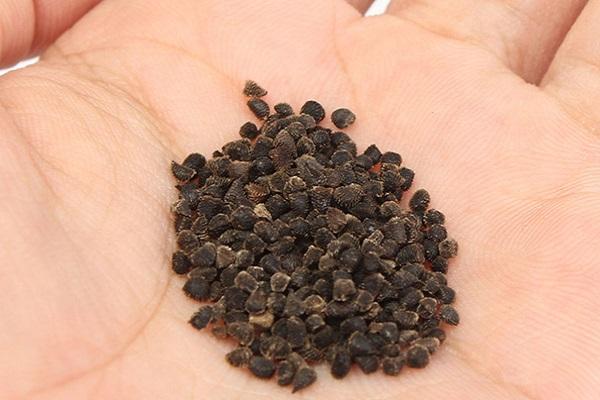
Landing
You need to plant seedlings shallowly. You can plant 2-3 pieces in one hole. After planting, the soil must be watered and sprinkled with humus. When planted deeply, the roots of the seedlings can rot.
Flower care
It is easy to care for a perennial, especially for mature bushes. Tall forms need support. The first garter is carried out when the shoots grow back up to 50 cm, following as they grow back.
How to water properly
In the first year of life, the perennial is watered once every 2 weeks. For 1 bush, 3 liters of water are consumed. In the heat, the volume is increased. After each watering (rain), the soil is loosened to a depth of 4 cm.Water more abundantly during flowering. Mature shrubs moisturize as needed when the top layer of the earth dries up.
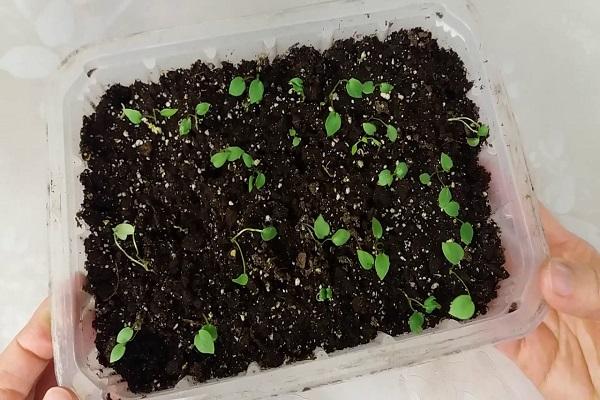
Fertilizing and fertilizing a flower
Feed for the first time in the spring, when the shoots grow up to 15 cm. Use mullein infusion. For watering 10 shrubs, 10 kg of manure per 100 liters of water is enough. In early June, they are fed with mineral fertilizers containing nitrogen, potassium, phosphorus. For abundant flowering, the ratio N: P: K is 1: 2: 2.
Delphinium pruning
Pruning is a necessary event. By means of it, the grower maintains the decorative effect of the bush, receives seed material, prepares for wintering.
Cutting methods
The first time pruning is carried out in the spring, when the height of the shoots is 25-30 cm. The 5 most powerful are left, and the rest are cut at ground level. In the summer, dried peduncles are cut off. To obtain seeds, leave the lower part of the branch with 10-15 seed pods. Sections at ground level are covered with clay to protect the roots from decay. High (20-30 cm) hemp is not treated with anything.
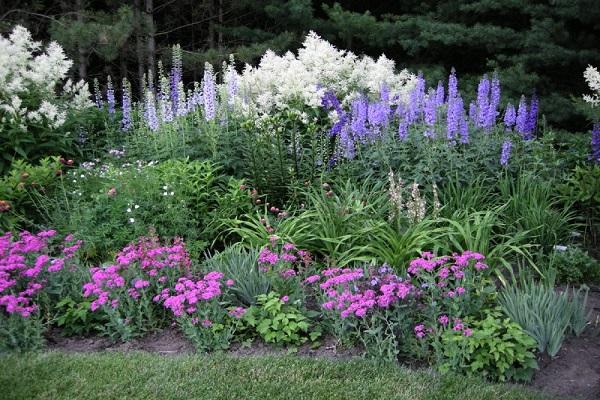
Pruning for the winter
Pruning is carried out after the aboveground part dries. Shoots are not cut off at the root, leaving 20 cm of hemp. This protects the roots of the delphinium from infection.
Delphinium transplant
Spend once every 3 (4) years in order to rejuvenate the bush. The place is not always changed. The bush is dug up, divided. Well-developed divisions are chosen. Fertilizers and humus are applied to the soil. Selected delphinium bushes are planted.
Diseases and pests
Of the pests, slugs, delphinium flies and aphids are dangerous. The fly lays eggs in buds. The larvae eat the middle of the flower. In infected plants, buds fall off, seeds do not form. To combat insects, they resort to the help of insecticides.
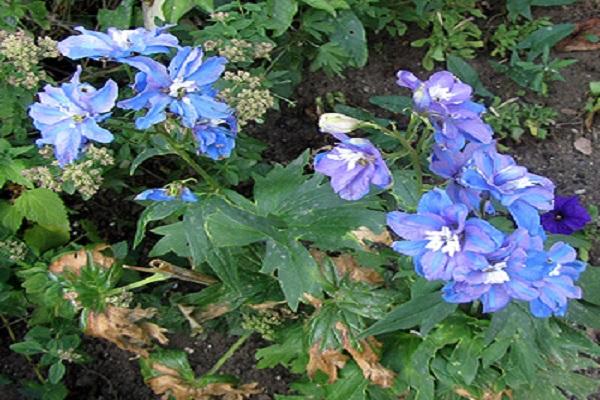
Delphiniums can suffer from fungal diseases. The danger is:
- powdery mildew;
- ring spot;
- ramulariasis.
Delphinium in landscape design
Low varieties of delphinium in flower beds go well with phlox, irises, poppy seeds. Tall varieties are planted next to farm buildings, hedges. Perennial delphinium looks equally good both in single and in group plantings.
It is planted on the lawn or in the foreground of ornamental shrubs:
- barberry;
- jasmine;
- almonds.
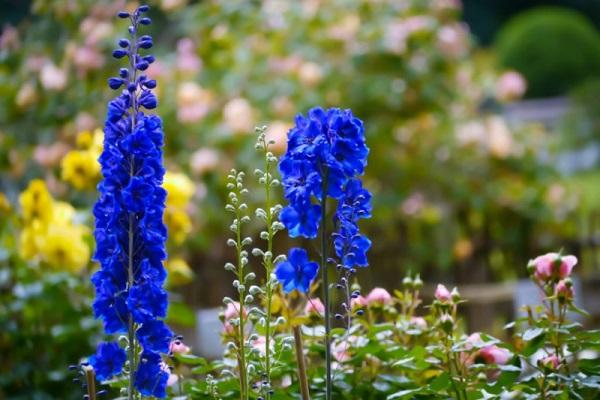
Low-growing species decorate the borders of garden paths, flower beds. Flowers are grown on balconies, terraces as a container culture. Dwarf varieties of delphinium look good in rocky gardens and rockeries.
Delphinium inflorescences are used to decorate bouquets. In flower beds, it coexists well with cereals. Good companions for delphinium:
- roses;
- dahlias;
- rudbeckia;
- lilies.
There are many interesting new products on sale. In March, you can start planting new varieties of delphinium. Within a year, spectacular pyramidal inflorescences will decorate the garden.
